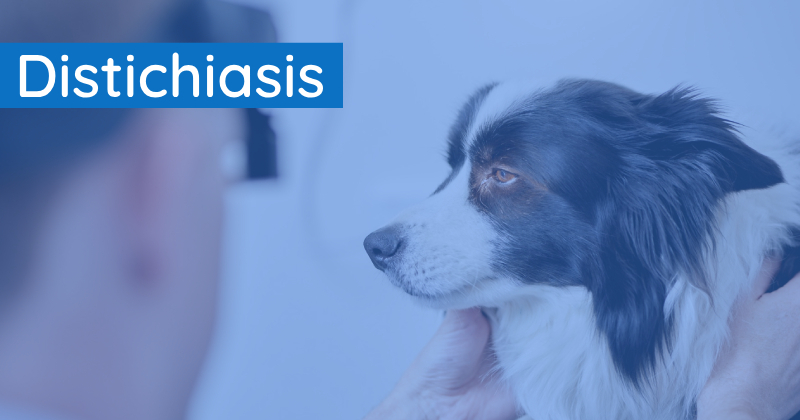Distichiasis [di-stuh-kai-uh-suhs]

What is it?
Distichiasis occurs when abnormal hairs grow along the eyelid edge where they shouldn’t be present. These hairs can rub on the surface of the eye, causing irritation or even ulcers.
What causes it?
Abnormal hairs result from the maldevelopment of the tiny glands along the edge of the eyelid, making it typically a concern in young dogs.
How is it treated?
A type of surgery called cryosurgery is usually necessary to treat this condition. This procedure is performed under general anesthesia and is a day procedure, meaning no overnight stay is required. With the assistance of our operating microscope, each abnormal hair follicle is frozen and thawed three times using liquid nitrogen, and then the hair is plucked out. The freezing and thawing cycles ensure the destruction of the hair follicle, preventing the hair from regrowing.
What to expect after surgery?
Some eye ointment is used twice daily after surgery, and a post-op checkup will be scheduled for two weeks afterward. There is typically a significant improvement in comfort immediately after the procedure. While all visible hairs will be removed during surgery, it may be the case that additional hairs emerge at a later date. If these cause significant problems, a second surgery may be required, though this is extremely uncommon.
How can we help?
Our experienced veterinary team can diagnose and perform high-level distichiasis surgery.
Want to know more about our ophthalmology services?
